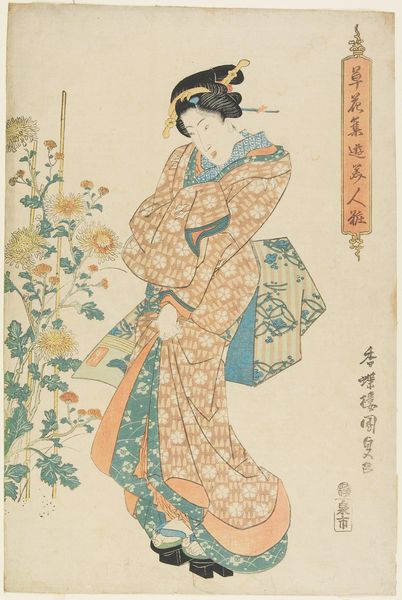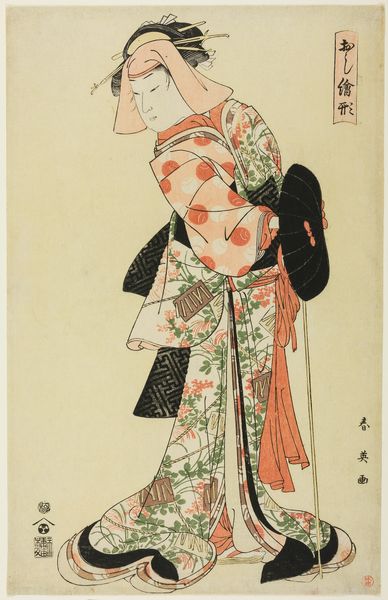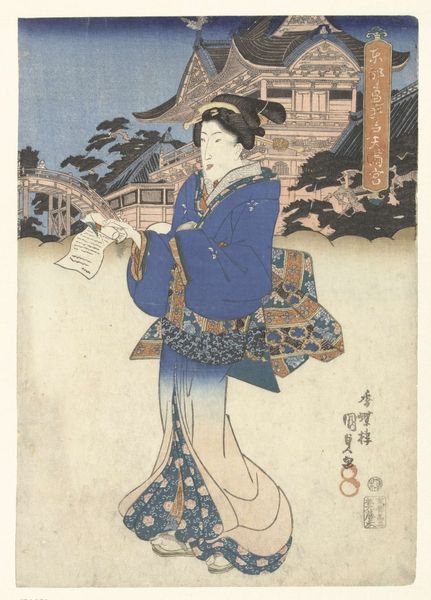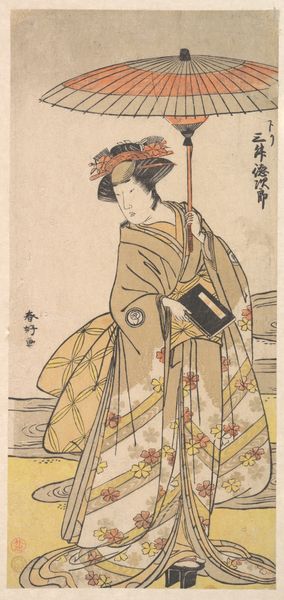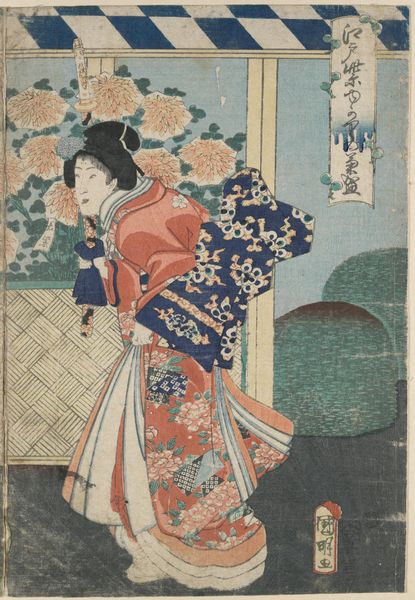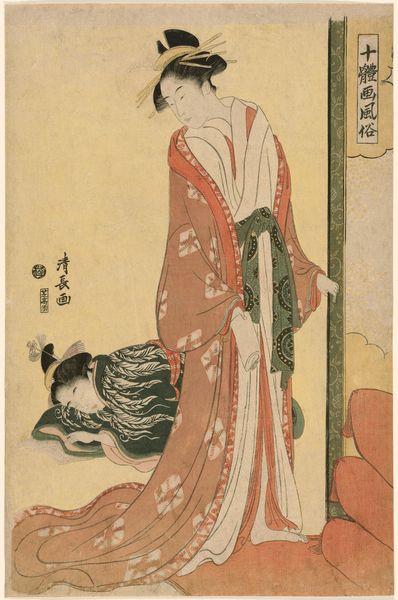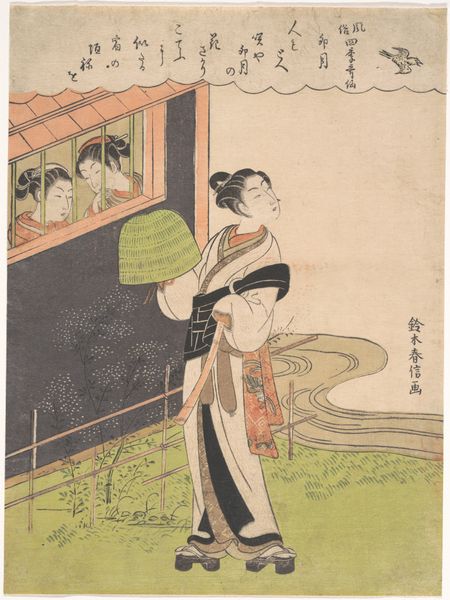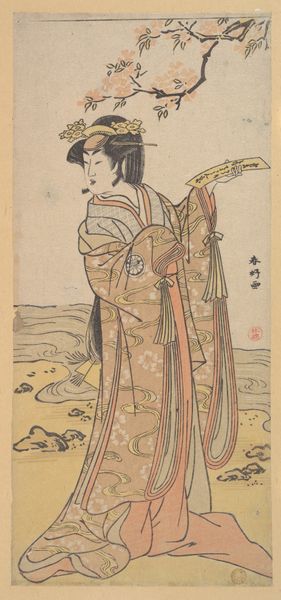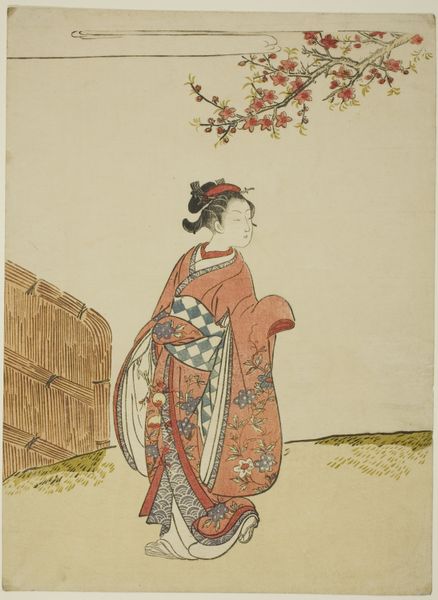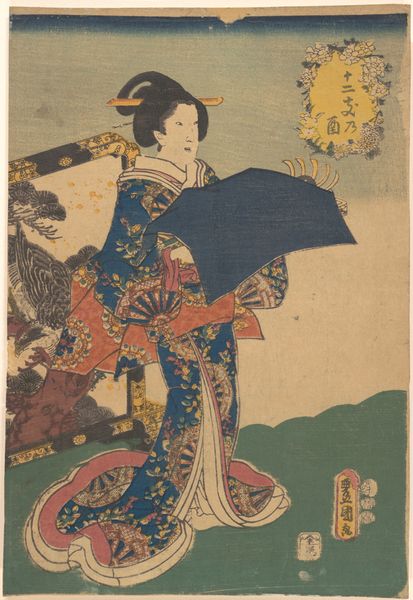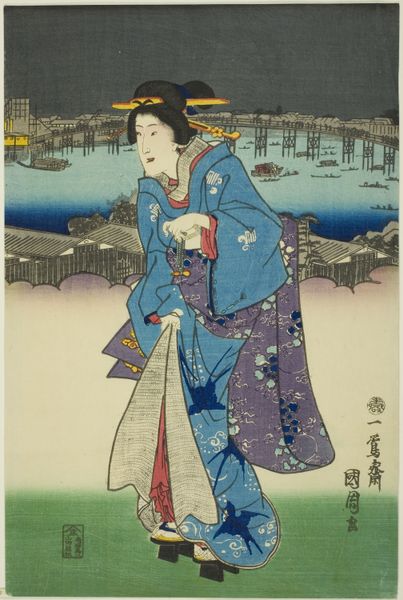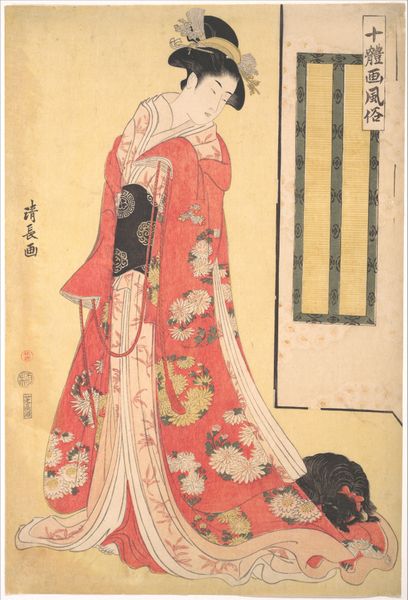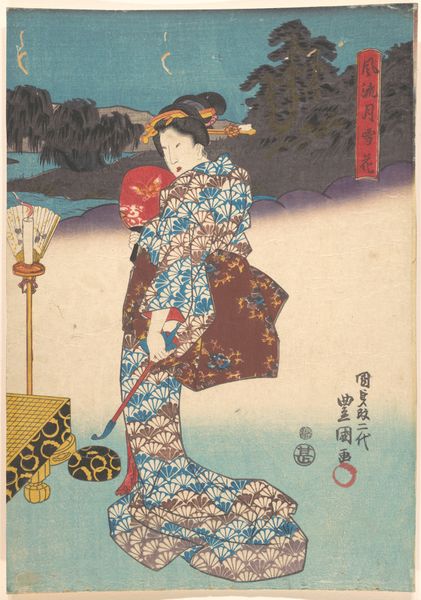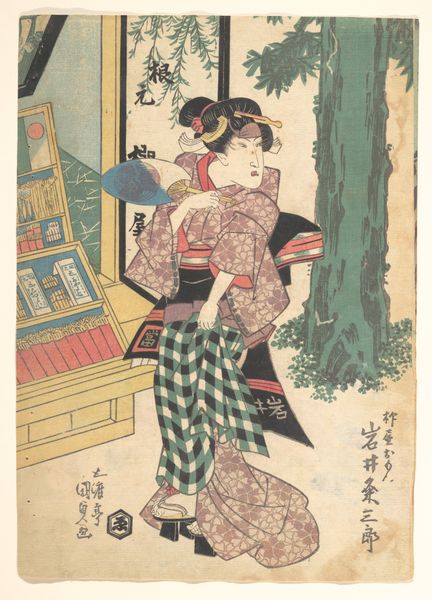
(Prostitute Standing in Front of a Shrine) c. 1842 - 1843
0:00
0:00
#
portrait
# print
#
ukiyo-e
#
japan
#
genre-painting
Dimensions: 14 3/16 × 9 5/8 in. (36 × 24.4 cm) (image, sheet, vertical ōban)
Copyright: Public Domain
Curator: Let's explore "(Prostitute Standing in Front of a Shrine)," a striking Ukiyo-e print by Utagawa Kunisada, dating to around 1842-1843, currently residing at the Minneapolis Institute of Art. Editor: My first thought is the almost painterly quality achieved through printmaking. Look at the layers of textile, how they seem to define a story around the figure; it is more than just decorative—it hints at societal stratification. Curator: Indeed. Notice how the figure stands juxtaposed against the shrine—a potent image contrasting sacred space with her profession. Her hand to her chin may signify contemplation, almost as if she's in dialogue with that sacred backdrop. What is she seeking? Salvation? Repentance? Editor: Or perhaps, practically speaking, she's waiting for a customer. But you raise a crucial point: context. This print—and countless others of its kind—were mass-produced. Woodblock printing democratized art. The very act of circulation changes how we view "high" and "low" subjects here, no? It questions hierarchies—between piety and earthly need. Curator: Precisely! And in Japanese art, these visual tensions have historical echoes; it is that sensitivity to human frailty paired with profound spiritual undertones, a dynamic that is both psychologically acute and artistically fertile. Also, the clothing itself could signify different affiliations. Editor: Yes, these materials are also key! What dyes were used? Who was involved in production? I am also fascinated by how these very objects helped form perceptions about the fleeting aspects of beauty. In this context it also reminds us about exploitation and labour of pleasure, or rather a harsh depiction of these as part of the larger society, instead of isolated individuals. Curator: Thinking about it this way deepens our encounter with it, going beyond pure aesthetics into social complexities through those material conditions. A sacred place and the materials on display come together to say much more than the single individual alone. Editor: I agree, tracing how this seemingly simple print intertwines material realities with potent cultural narratives expands my appreciation and underscores its historical power.
Comments
No comments
Be the first to comment and join the conversation on the ultimate creative platform.
